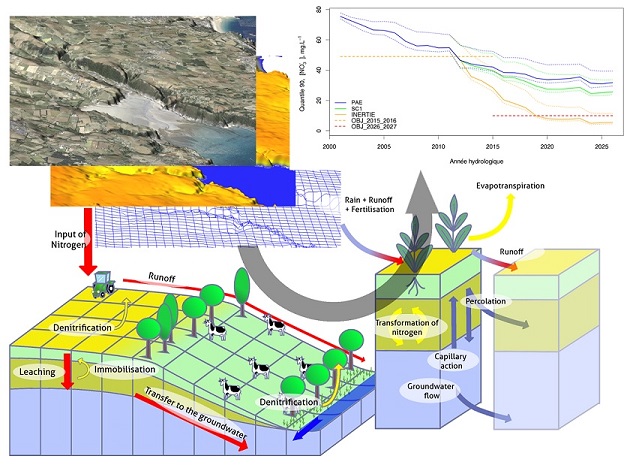What will the nitrate concentration be in streams in 10, 15, 20 years?
Can a reorganisation of the landscape lead to a decrease in this concentration?
How will a change in agricultural practices affect water quality?
What is the impact of global warming on catchments?
These are the questions that SCHEME can answer.
A dynamic and spatial water quality model: TNT2
To be able to answer these questions, SCHEME uses the TNT2 model developed by the French National Institute for Agricultural Research (INRA).
Thanks to its level of complexity and representation of the nitrogen cycle on a landscape level, TNT2 is especially adapted to answer water quality management questions on the nitrogen/nitrate issue. Through virtual experimentation and the fact that it takes into account the specificity of the catchment studied, the model allows us to test the impact of change scenarios whether they are related to: climate, agricultural practices, their spatial and/or temporal organisation.
The level of spatial discretisation allows an explicit representation of the various landscape elements: agricultural plots, hedges, wetland areas... Their locations can have a major significance regarding the processes involved in the nitrogen cycle (e.g. denitrification in wetland areas). Furthermore, despite the complexity of the model, the calculation time is « reasonable » and allows a temporal exploration corresponding to the response time of the catchment system: ranging from 10 to 100 years.
Thanks to our calculation cluster, our TNT2 modelling results can be accompanied by confidence intervals and measures of the credibility of the model.
That is the method we use in Brittany to study catchments under the green algae issue.

